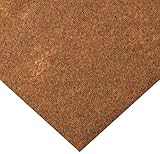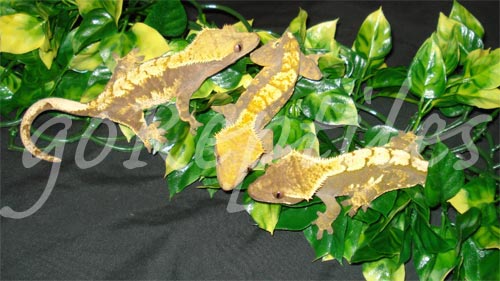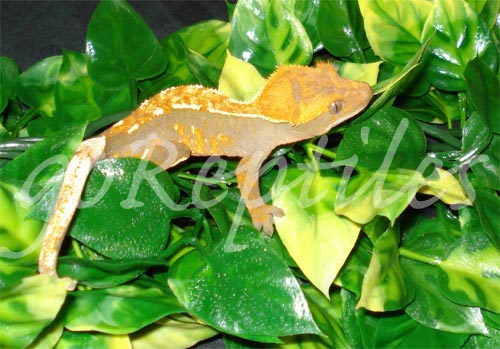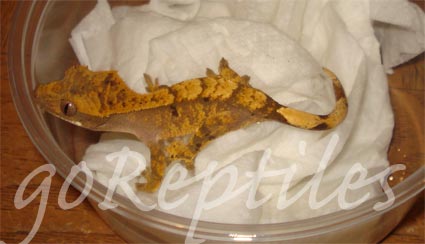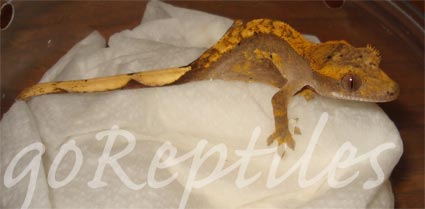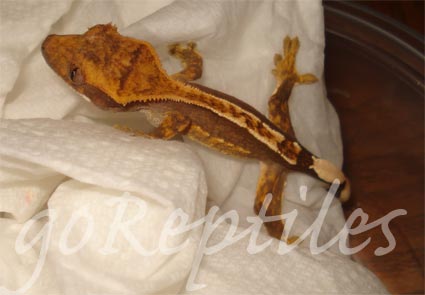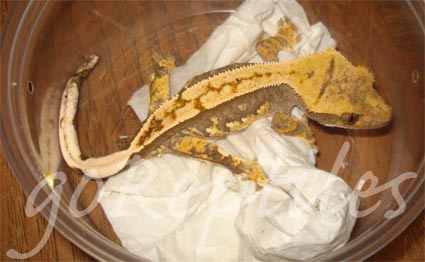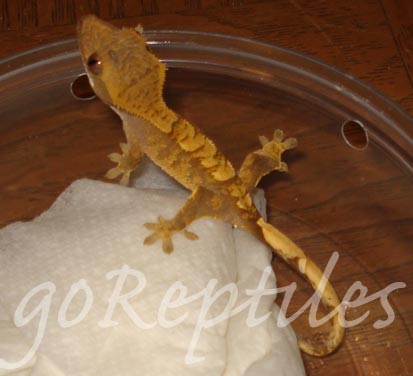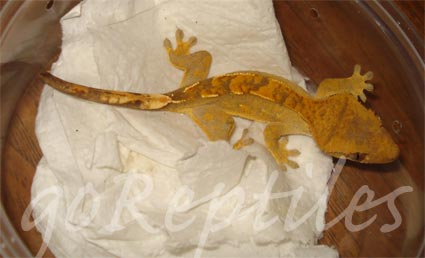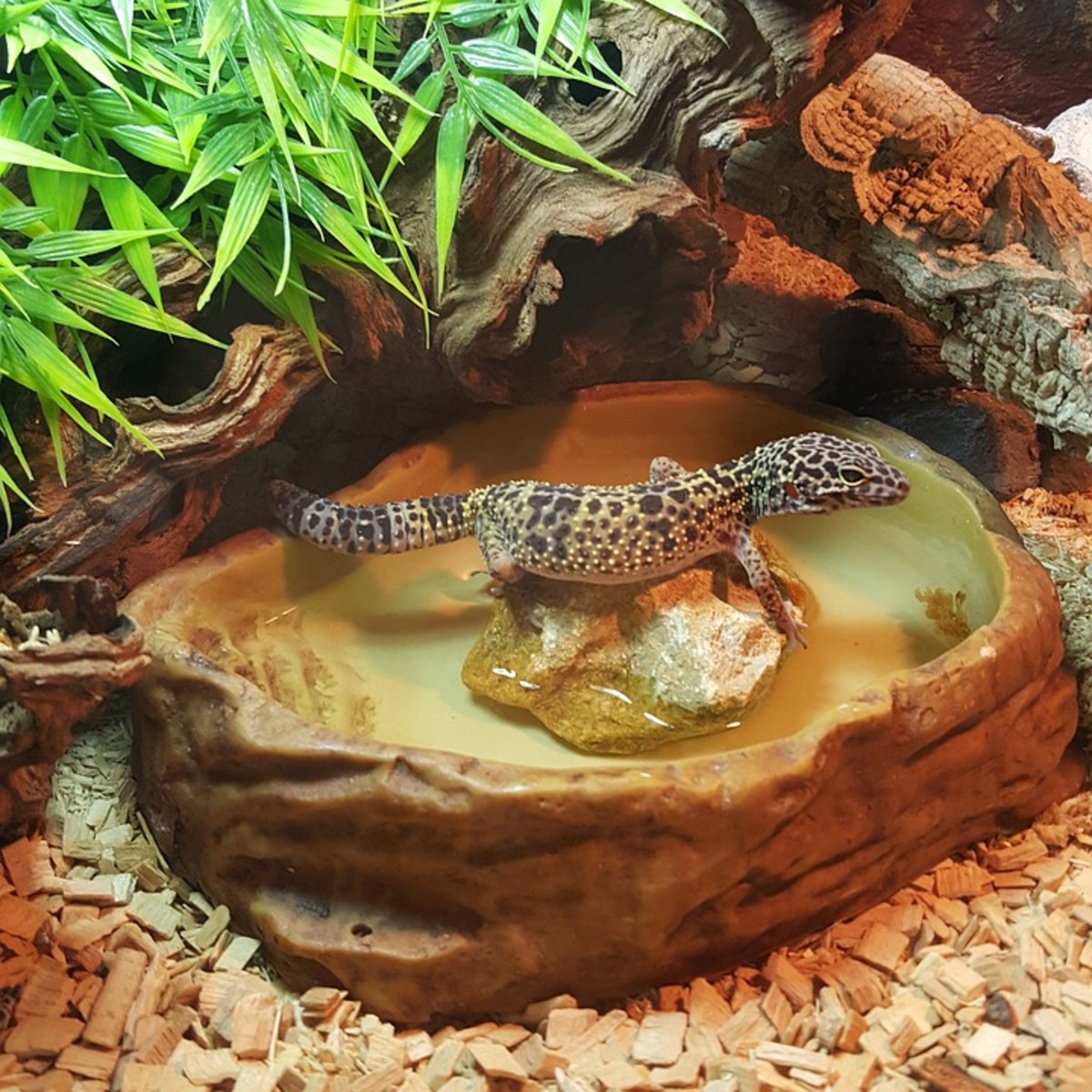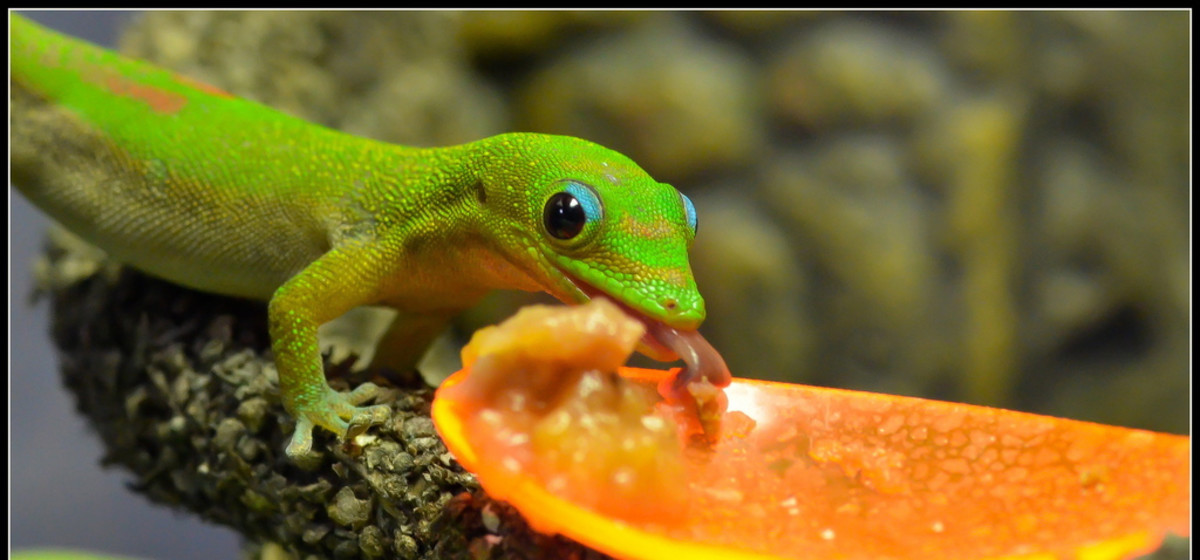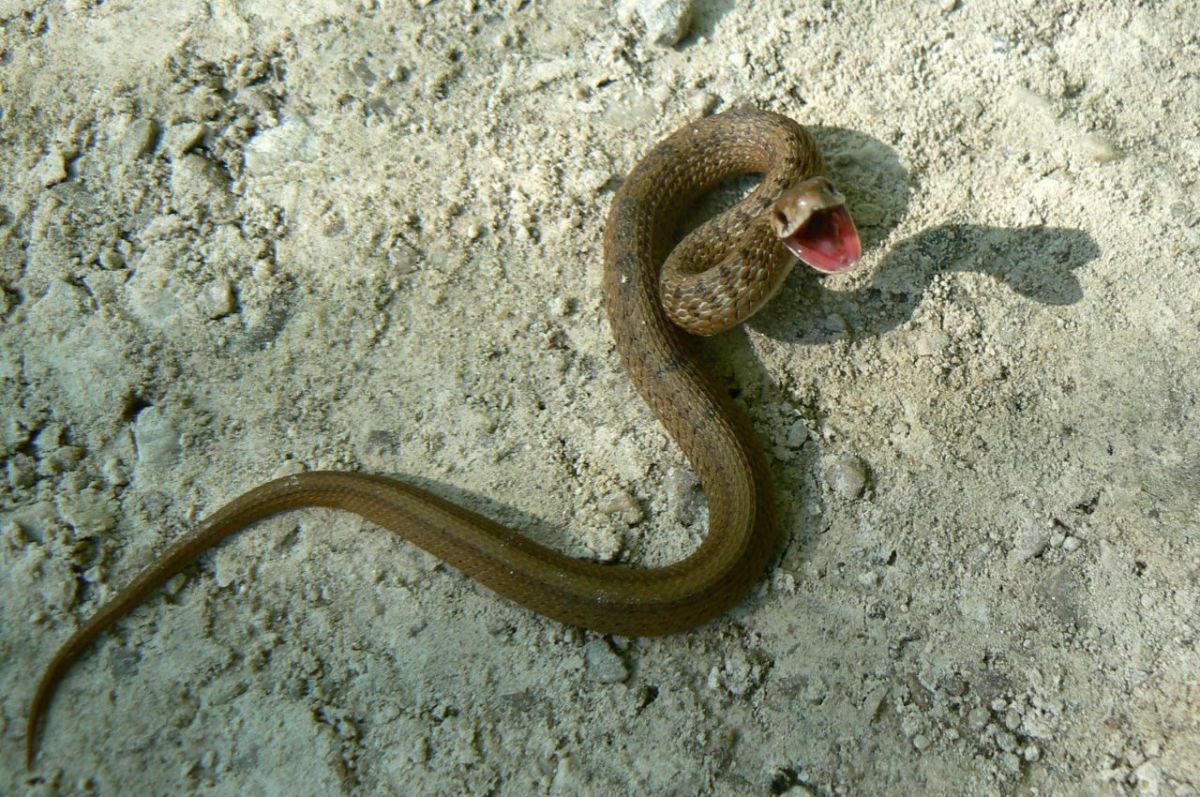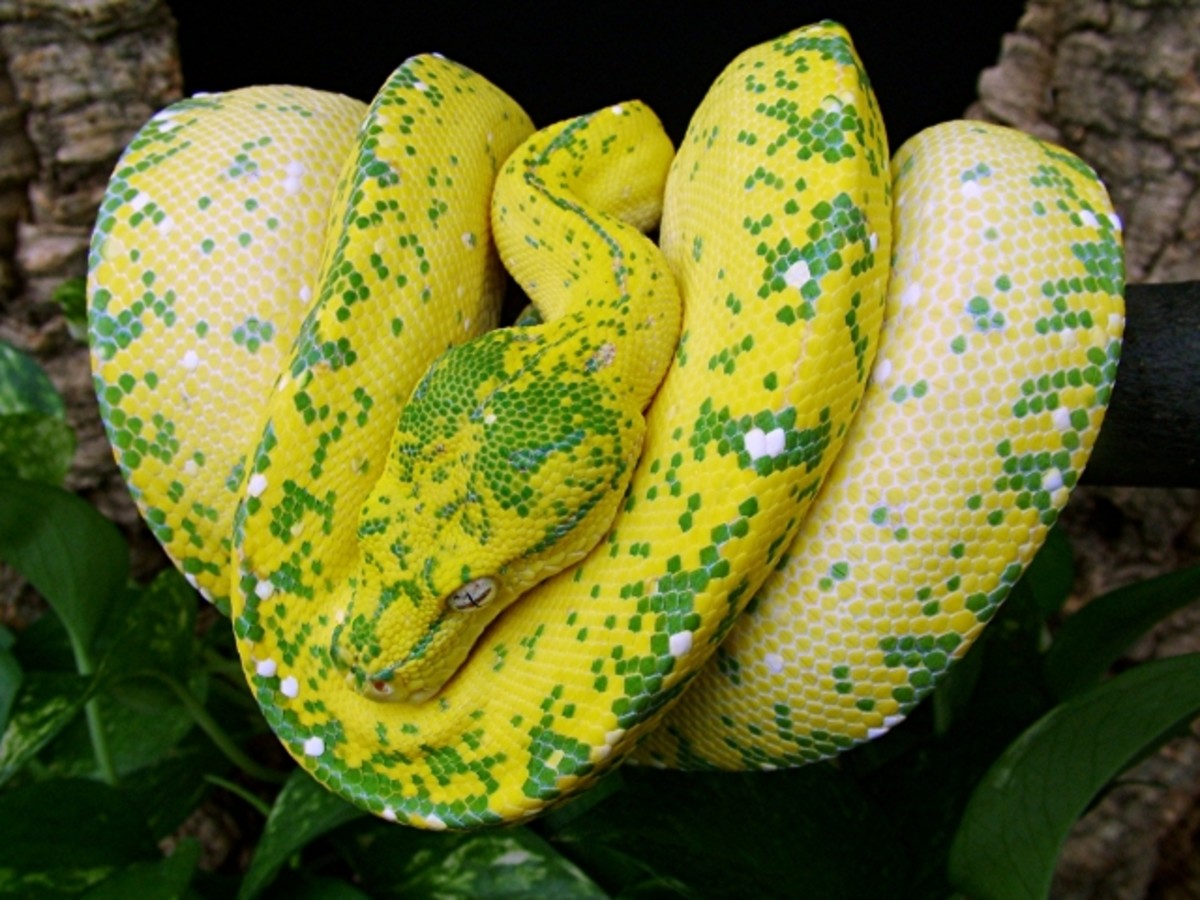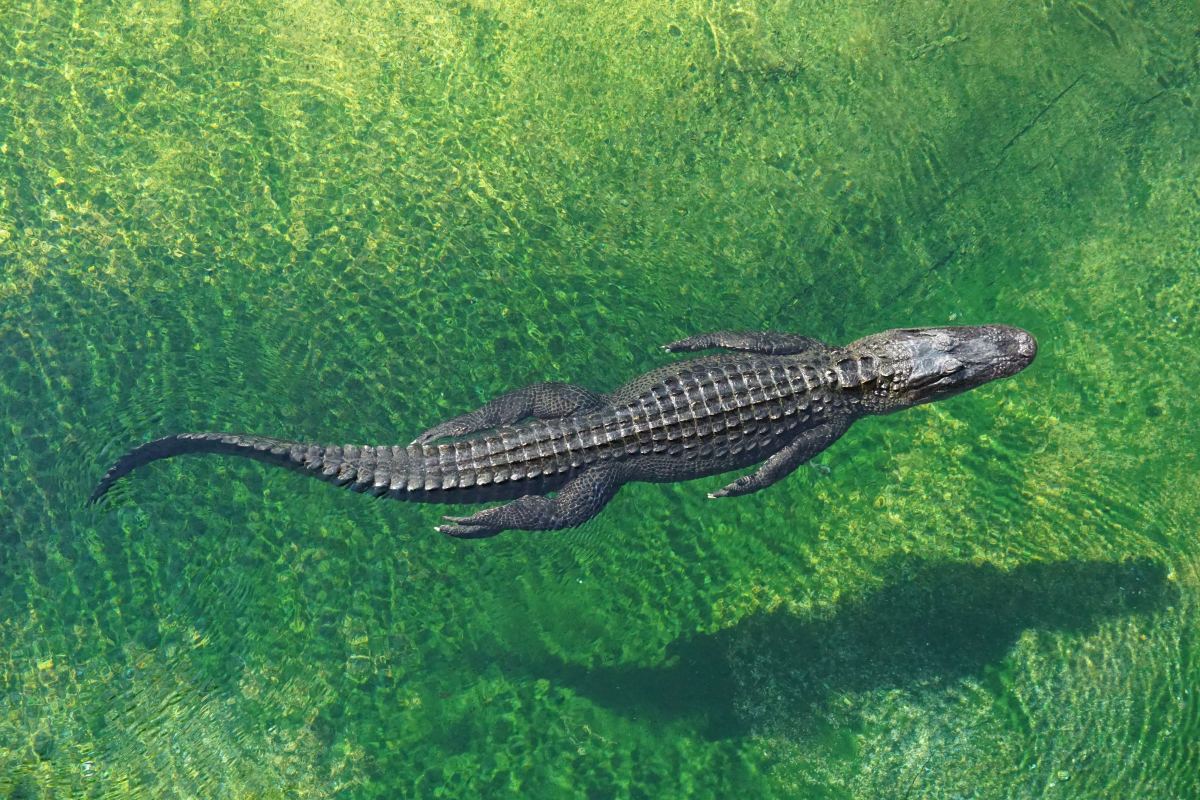Crested Gecko Care
Crested Gecko
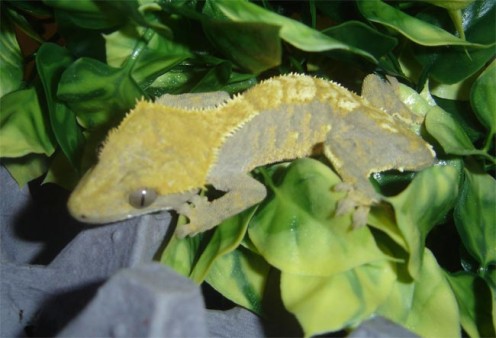
Rhacodactylus ciliatus
Crested Geckos are native to New Caledonia, located approximately 900 miles east of Australia. They are indigenous to the island, Grand Terre, and the Isle of Pines to the south.
Because crested geckos weren't reported being seen in their native environments, many believed they had gone extinct. In 1994, the species was found on the Isle de Pins.
Crested geckos are arboreal, and since they are nocturnal, they spend their days hiding amongst leaves and branches.
Crested Gecko Lifespan
It is assumed that crested geckos have a similarly averaged lifespan as other geckos. It is unknown for sure, as they have only been in the reptile market since 1994 when the Europeans discovered the gecko on the Isle de Pins. But, is is thought that crested geckos will live about 15-20 years.
Crested Gecko Size
As adults, crested geckos can reach 4-4.5" snout to vent, or about 8" to the tip of the tail.
Crested Geckos as Pets
Crested geckos make great beginner reptile pets. They are very docile and can be handled with care.
They are a very, very jumpy reptile. So it's best to let them jump hand to hand without any force. Limit handling baby and juvenile geckos, until they are used to you. Excessive handling will cause unnecessary stress.
If you grab the gecko suddenly by force or by the tail, you risk the gecko dropping its tail, and unlike many gecko species, crested geckos don't regrow their tails.
Crested Gecko Books
Crested Gecko Housing
Enclosure Size:
First off NEVER house more than one male gecko together, as they are territorial and will fight, causing severe injuries and even death. One male can be housed with up to 3 females, but be prepared for mating and eggs. Or, you can house multiple females together, but do watch for any signs of bullying or stress when housing more than one gecko in an enclosure.
Crested geckos are arboreal and need an enclosure that is taller than it is long. One crested gecko can live in a 15-gallon tall aquarium (18"W x 18"D x 18"T), or 3 in a 29-gallon aquarium (30"W x 12½"D x 17"T ).
*Note: 3 crested geckos in a 29- gallon is really pushing it.
Décor:
You can make a simplistic or naturalistic enclosure setup. Make sure to utilize the space effectively, in either case. Add ample climbing and hiding places, including plants and branches.
The simplistic approach is more practical than it is aesthetically pleasing. This approach includes egg cartons; they are cheap and provide ample hiding places and climbing surfaces. If you do not want to use egg trays, you can use fake or real (potted) plants, branches, and cork bark.
The naturalistic approach is more aesthetically pleasing than it is practical. If you choose this method, it is always best to buy a larger enclosure for you gecko because you will need to add plants and branches. This approach involves the use of loose substrate and mosses as floor covering. Live plants are added either in pots or planted in the substrate with branches and bark. The advantage of a naturalistic type enclosure is that it provides the geckos with amply hiding places and climbing sources. But, on the other hand having loose substrates creates the risk of impaction.
Lighting:
Being nocturnal, crested geckos do not require supplemental lighting. Do not place the enclosure in direct sunlight, but indirect lighting can be beneficial in creating a day/night scenario.
Heating:
Daytime temperatures should NEVER reach higher than 80F; the daytime temperatures should range from 72-80F. At night, the temperatures can drop to the high 60s to the low 70s.
Humidity:
The enclosure can stay fairly dry during the day. With thorough misting once or twice a day, the humidity will rise. Strive for average humidity levels between 70-80%.
For babies and juvenile geckos, mist the enclosure twice a day: once in the morning and once at night. For adults, mist the enclosure once at night.
Keeping too high humidity will increase the chances of fungus, but low humidity can cause shedding problems. So, by misting the enclosure, you create a balanced humidity level.
Floppy Tail Syndrome
Floppy Tail Syndrome is caused by enclosures that lack climbing sources. When the gecko hands upside down on the walls of the enclosure, the tail is left flopping over it's back. This can deform the gecko's pelvis and give them a crooked appearance.
Reptile Substrate
Many people use Bed-A-Beast, Repti-Bark, or some other type of naturalistic bedding, but using loose substrates can cause impaction, severe constipation, can be fatal.
Other options:
- Paper towels
- Reptile carpet
- Slate
- Roll out tile
- Butcher paper
- Newsprint with a non-toxic ink.
Avoid using:
- Cedar, pine, other wood shavings
- Hard wood and bark chips
- Gravel
- Crushed corn cobs or walnut shells
- Kitty litter
- Potting soil
- Silica sand
- Calci-sand
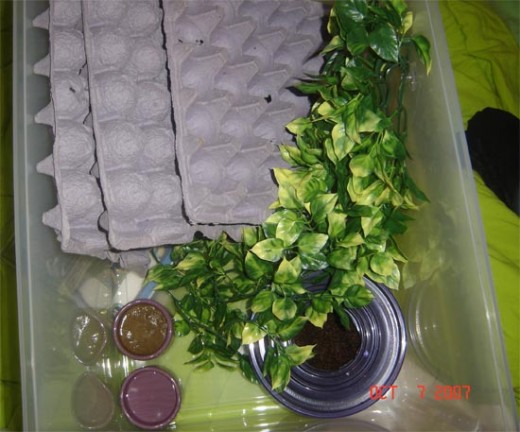
Crested Gecko Diet
Crested geckos have simple dietary concerns: Crested Gecko Diet (meal replacement powder) and crickets. You can feed crested geckos fruit baby foods, but only at limited amounts. Excessive baby food, can create calcium deficiency as there is little nutrition in the baby food.
The meal replacement powder (MRP), Crested Gecko Diet (CGD), was created by Allen Repashy. It provides crested geckos with all the nourishment and that it needs. You can purchase CGD at most pet stores and Amazon. CGD should be provided to the gecko daily; usually it will last a few days before you have to remake it.
Crested geckos should be provided crickets once or twice a week, depending on their size and age. Younger geckos should be provided crickets at least twice a week, in addition to the daily CGD. Coat the crickets in a calcium supplement.
If you choose to give your gecko baby food, make sure that it is only a supplement to the CGD. Crested gecko approved baby foods include:
- Peaches
- Apricots
- Applesauce
- Bananas
For the most part crested geckos prefer to drink water off the enclosure walls and décor. You can provide the gecko with a water bowl in addition to daily sprays.
Gutloading Crickets
Crickets must be gutloaded at least 24 hours before you feed them to your crested geckos. It's an easy procedure. It just means to make sure that the crickets are fed prior to feeding them to your geckos.
If you purchase your crickets in advance, keep them in a critter keeper with a pice of egg carton to climb on. To gut-load the crickets, place either store bought cricket food, fish flakes, oranges, potatoes, or carrots, in with the crickets.
If you purchase crickets just for the meal, most petstores provide their crickets with some sort of feed before you bring them home. In this case, you wouldn't have to worry about it. Just dust them, and put them in the enclosure.
By feeding the crickets, they become nutritionally balanced, which is passed on to the gecko. You must still coat the insects for added minerals!
Crested Gecko Morphs
Click thumbnail to view full-size









